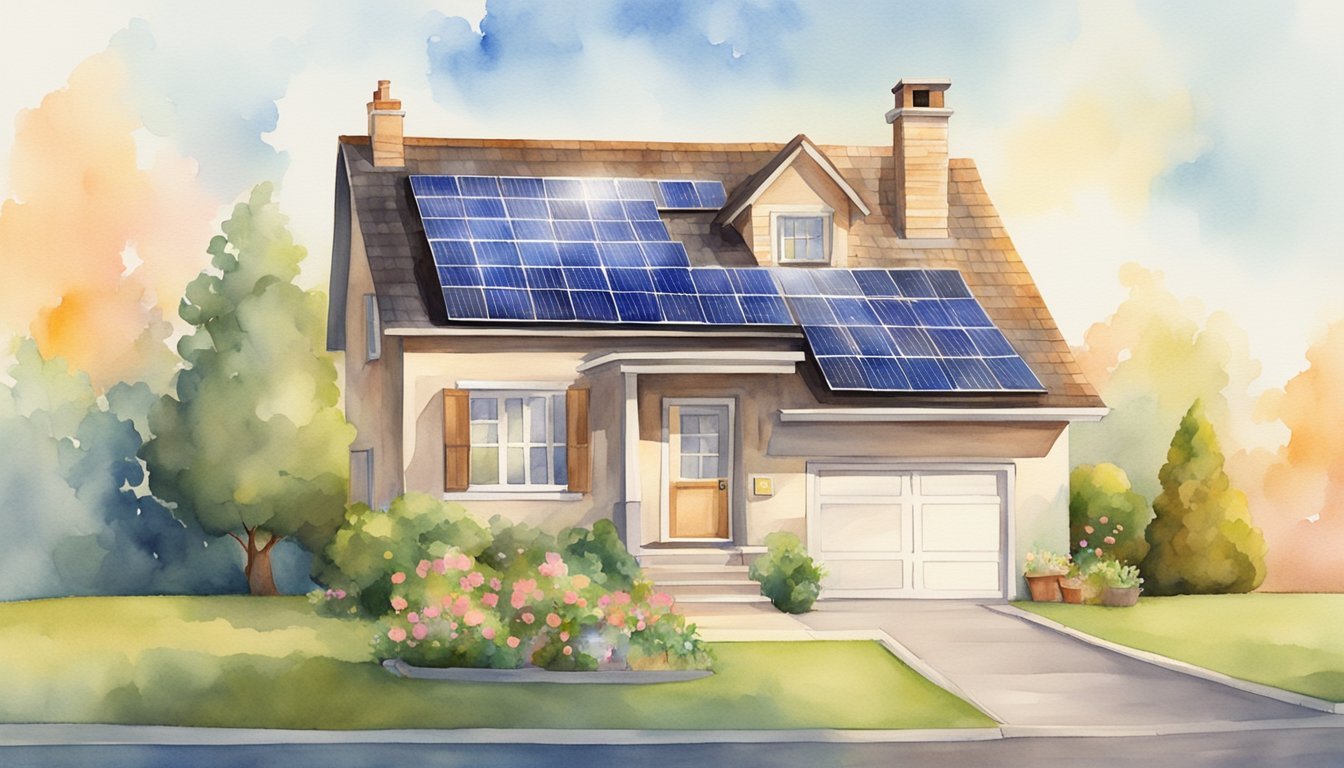Understanding Solar Power for Your Home
Solar power for your home can significantly reduce energy bills and increase energy independence. This section delves into the fundamentals of residential solar power and the specifics homeowners should know when considering solar panel systems.
Basics of Solar Energy and Solar Panels
Solar panels consist of numerous solar cells made from silicon, which convert sunlight into electricity. This process, known as the photovoltaic effect, allows homeowners to harness clean energy directly from the sun. The typical solar panel system for residential use converts solar energy into usable power for the home without harmful emissions.
Types and Components of Solar Panel Systems
Residential solar panel systems come in various types, mainly grid-tied, off-grid, and hybrid. Each system includes essential components such as the solar panels, inverters, and sometimes batteries for energy storage. The inverter plays a critical role, converting the direct current (DC) generated by the panels into alternate current (AC), suitable for home use.
Evaluating Solar Potential and Installation Requirements
To determine a home’s solar potential, factors like climate, weather, and location are vital. A south-facing roof without shade increases the effectiveness of a solar system. In addition, installation requirements must consider local regulations and the structural capacity of the building to support rooftop panels.
Solar Efficiency and Performance Metrics
The efficiency of a solar panel is a measure of its ability to convert sunlight into electricity. The temperature coefficient and the panel’s performance metrics under standard test conditions give insight into the energy production and power output you can expect from your system.
Maintenance and Longevity of Solar Systems
Solar panel systems are a long-term investment with warranties often covering 25 years or more. The longevity of the system can exceed this with minimal maintenance. Panels may experience a slight degradation in efficiency over time, which is normal and accounted for by manufacturers in their performance guarantees.
Financial Considerations and Incentives

Investing in solar power can significantly impact a homeowner’s finances, offering both immediate and long-term economic benefits. Key financial factors include upfront costs, potential energy bill savings, as well as various financing options and incentives.
Costs and Savings of Solar Installations
The initial expense to purchase a solar panel system can vary, typically ranging from $15,000 to $35,000. This cost not only includes the price of monocrystalline silicon solar panels but also soft costs such as installation and permit fees. Despite the upfront investment, solar installations can increase a home’s value and provide savings on electric bills. Homeowners can reduce their carbon footprint while enjoying the benefits of energy independence, mitigating the unforeseen spikes in electricity cost due to inflation.
Financing Options for Home Solar Systems
Solar financing has become more accessible, with options like solar loans, cash purchases, leases, and power purchase agreements (PPAs). Solar loans allow homeowners to finance the system cost over time, which can be offset by the energy bill savings. Cash purchases eliminate ongoing payments but require a substantial initial outlay. Solar leases and PPAs offer an alternative where the homeowner pays for the energy produced rather than owning the equipment outright.
Understanding Solar Investment Incentives
The Federal government encourages homeowners to opt for solar energy by offering a solar investment tax credit (ITC) also known as the federal solar tax credit. This incentive allows homeowners to deduct a percentage of the cost of installing a solar energy system from their federal taxes, easing the burden of the initial investment.
Net Metering and Solar Energy Credits
Net metering is a billing mechanism that credits solar energy system owners for the electricity they add to the grid. For example, if a residential customer has a solar PV system on the home’s rooftop, it may generate more electricity than the home uses during daylight hours. If the home is net-metered, the electricity meter will run backwards to provide a credit against what electricity is consumed at night or during periods when the home’s electricity use exceeds the system’s output. Customers are only billed for their “net” energy use. The utility company essentially buys back the excess electricity produced, resulting in further reductions to the homeowner’s electricity bill.

